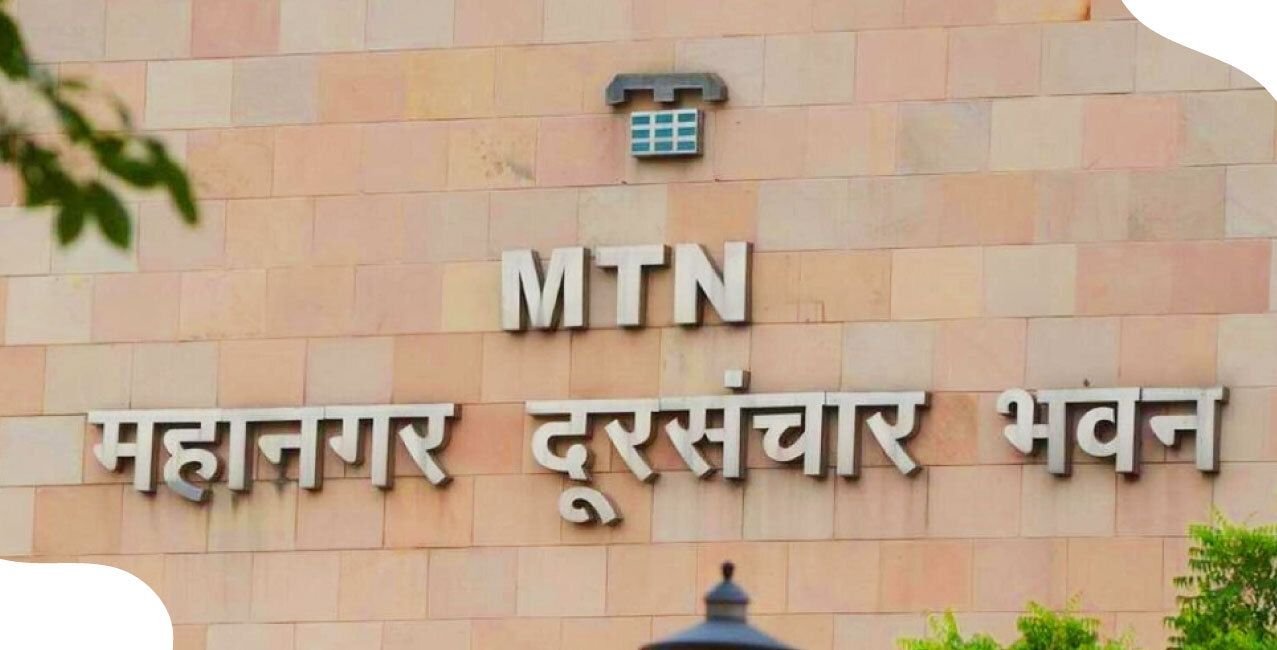
Author
LoansJagat Team
Read Time
4 Min
19 Aug 2025
MTNL Fails to Repay Loans Worth ₹8,700 Crores
The crisis in India’s state-run telecom has now entered a dangerous stage, with official figures confirming the weight of unpaid dues
Can a trusted city lifeline suddenly fall under a mountain of debt? For many households in Delhi and Mumbai, Mahanagar Telephone Nigam Limited (MTNL) once stood as the face of reliable landline and broadband.
Yet, as of August 18, 2025, a Reuters report confirmed that the same public sector telecom operator has defaulted on loan repayments worth ₹8,659 crore. The news has spread like fire in the Indian banking sector. It raised questions about the burden carried by public banks that backed its loans.
The official filing to the stock exchange revealed the shocking split. Out of the total default, ₹7,794 crore was unpaid principal, while ₹865 crore was overdue interest. This was a sign that repayments were not happening at all.
MTNL Debt Repayment Failure in India
The report of August 2025 makes it clear. MTNL did not honour its dues. It failed to repay a total of ₹8,659 crore, including both principal and interest. This is not an isolated event. In June 2025, the company had already disclosed defaults worth ₹8,585 crore.
The default did not just affect one or two banks. Seven public sector banks had to record MTNL as a defaulter. The bank-wise exposure is a reminder of how state-run lenders are tied to public undertakings. The breakdown is as follows:
This list shows how widely the damage is spread. None of these banks are in a position to write off such sums easily. The defaults will reflect as stressed assets in their balance sheets. For the banking sector already under pressure from corporate non-performing loans, MTNL’s default is another heavy blow.
Read More – Debt Management Strategies for Middle-Class Families
MTNL Financial Crisis and Loan Defaults
The story is bigger than the loans alone, it stretches into government-backed bonds and fresh borrowings. These bonds, backed by the Government of India, stand at ₹24,071 crore as of July 2025.
On top of this, the Department of Telecommunications extended loans of ₹1,921 crore to pay interest on those bonds. The numbers clearly show the scale of the MTNL financial crisis and loan defaults.
The total of ₹34,577 crore debt as on 31 July 2025 places MTNL among the most indebted state-owned firms in India.
MTNL Unable to Repay 87 Billion Rupees Loan
The July report, made public through filings, stated MTNL’s debt rose to ₹34,577 crore from ₹34,484 crore in June 2025. While the rise looks small, it signals that interest is mounting and repayments are stuck.
The company is clearly unable to repay the 87 billion rupees loan. The situation cannot be overlooked as it signals how repayments keep slipping further away each month.
The message is clear. Even a modest rise in debt becomes unbearable when a company is not able to repay. MTNL is caught in this cycle.
MTNL Loan Default Impact on Telecom Sector
The impact of MTNL’s default goes beyond balance sheets. For the telecom sector, it shakes investor confidence. A state-owned operator that once connected the largest cities is now struggling to pay dues. Public sector banks are forced to treat these loans as stressed assets, which reduces their lending strength.
This comes at a time when telecom in India needs heavy investment for 5G rollout and fibre expansion. Private operators are moving fast, but public players are stuck with old liabilities.
According to comments made by Punjab National Bank’s Managing Director Ashok Chandra in July 2025, debt resolution talks could take three to four months. This delay means the stress will continue.
The difference between default and total debt shows that while the loans are already unpaid, sovereign bonds and DoT loans are also hanging over MTNL.
Also Read - Finance Ministry Reveals ₹1.62 Lakh Crore Owed by Over 1,600 Wilful Defaulters to PSU Banks
Government Revival Plans Fail as MTNL Faces Merger Talks with BSNL
The problem is not only financial. MTNL has been losing its subscriber base for years. Private players dominate the mobile and broadband market. MTNL is still stuck with outdated systems in many regions. Staff costs remain high while revenue continues to shrink. Maintenance itself has become a challenge without fresh capital.
The government has tried rescue steps before. Revival packages and spectrum allotments were given in earlier years. But those measures only delayed the fall.
Now, the crisis has deepened to a level where merger with Bharat Sanchar Nigam Limited (BSNL) or a full restructuring plan is being discussed. Both options are politically and financially complex. They involve labour unions, debt restructuring, and fresh capital requirements
Conclusion
The MTNL loan default shows how a once-trusted telecom company is now weighed down by heavy debt and shrinking revenues. With total dues of ₹34,577 crore as of July 2025 and defaults of ₹8,659 crore, the company is struggling to survive.
Public sector banks are under pressure because of these unpaid loans. The government faces questions on how long it can support MTNL. For customers, the worry is slow services and little improvement in network quality.
The future of MTNL may lie in a merger with BSNL or a full restructuring plan. Both paths are difficult. But without quick action, the debt will only grow and the crisis will spread further into the banking and telecom sector.
About the Author

LoansJagat Team
‘Simplify Finance for Everyone.’ This is the common goal of our team, as we try to explain any topic with relatable examples. From personal to business finance, managing EMIs to becoming debt-free, we do extensive research on each and every parameter, so you don’t have to. Scroll up and have a look at what 15+ years of experience in the BFSI sector looks like.

Quick Apply Loan
Subscribe Now
Related Blog Post

LoansJagat Team • 10 Jun 2025

LoansJagat Team • 06 Jun 2025

LoansJagat Team • 22 Sep 2025